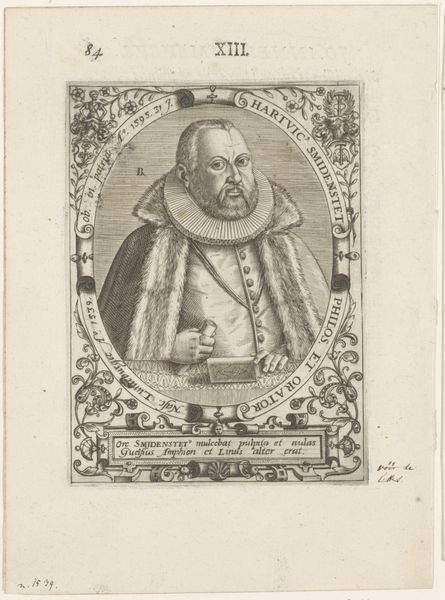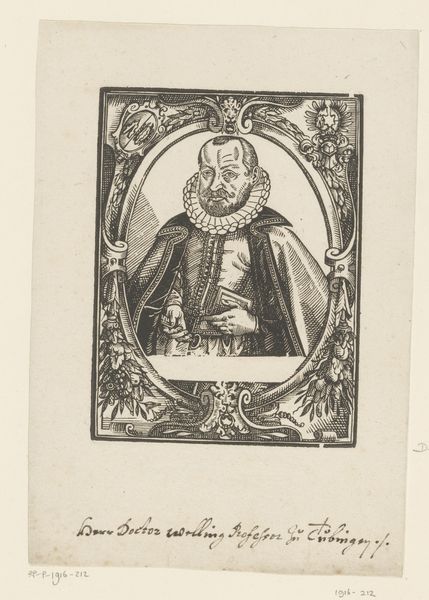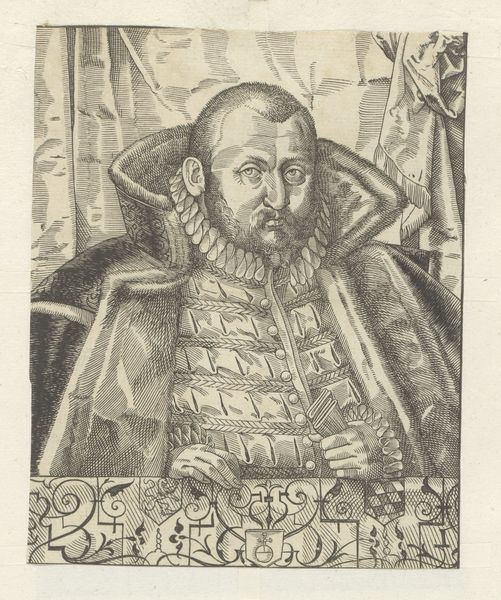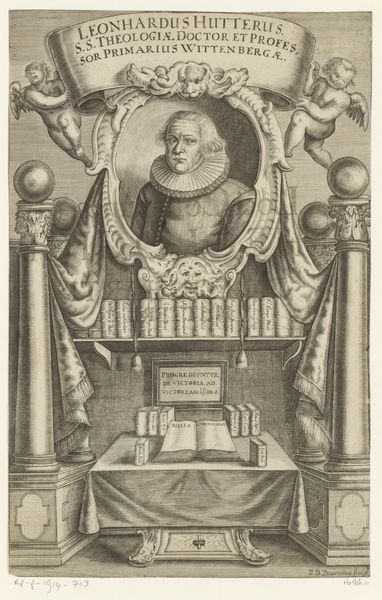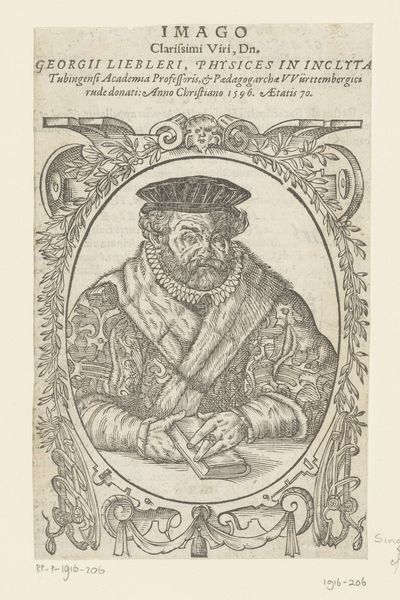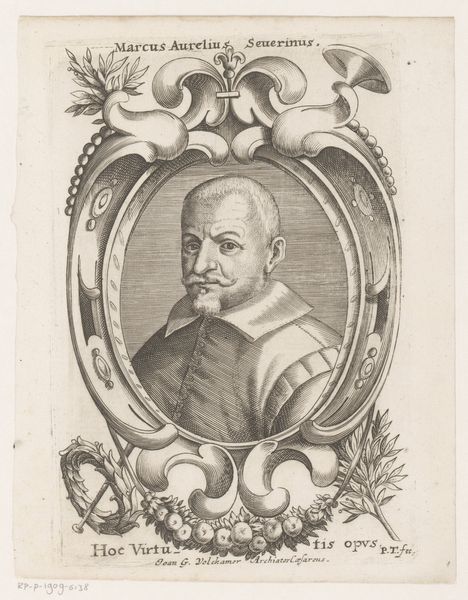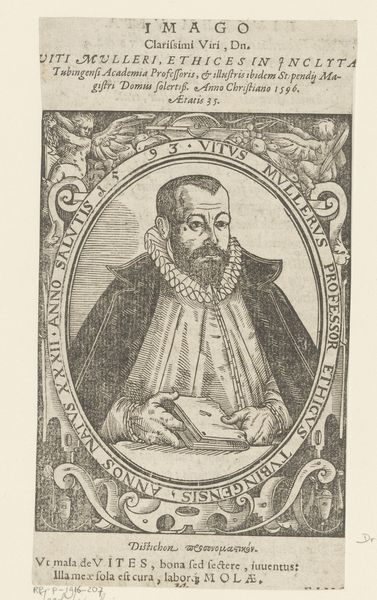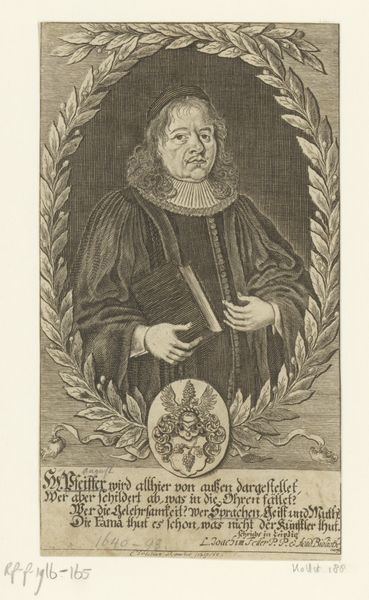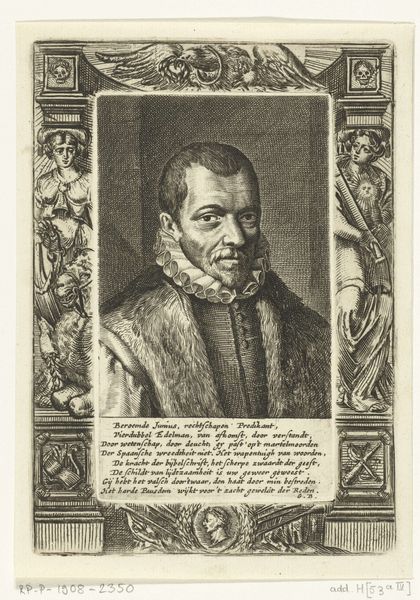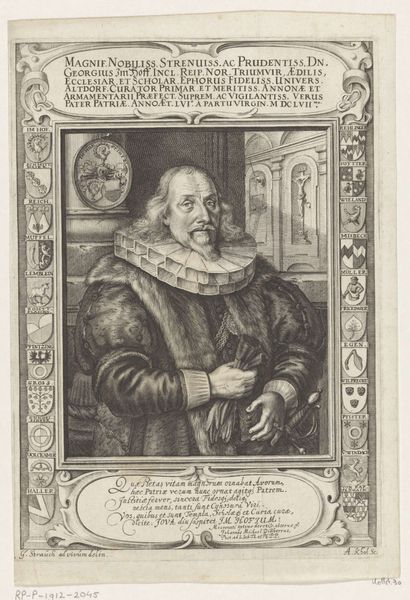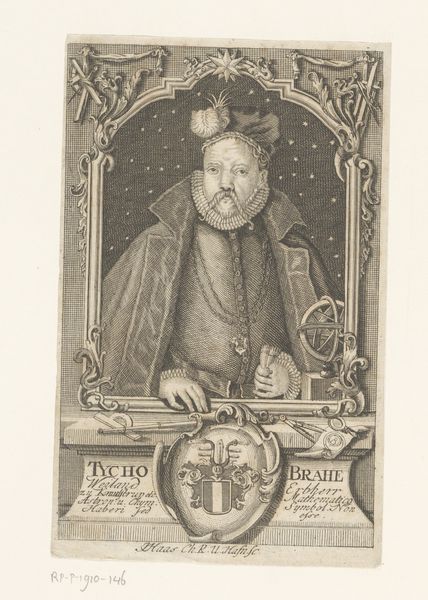
print, paper, engraving
#
portrait
#
baroque
# print
#
pen illustration
#
old engraving style
#
paper
#
engraving
Dimensions: height 131 mm, width 101 mm
Copyright: Rijks Museum: Open Domain
Curator: Welcome to this exquisite 1608 engraving titled "Portret van Georg Burckhard." Crafted by Jakob Lederlein, it presents a striking image of a man of evident stature, made with meticulous detail. Editor: My first impression is one of contained power. Despite its age, there's something incredibly commanding about this piece, wouldn't you agree? The figure feels very present and important. Curator: Absolutely. Lederlein’s work, printed on paper, captures Burckhard in a classic Baroque style. I find myself drawn to the techniques evident in its production. Look closely at the deliberate mark-making – the texture suggests both the status of the sitter, but also the economic reality of the commissioned piece. Editor: The iconography is what grabs me! Note the frame itself: a fusion of cherubic figures and grotesque masks. This contrast between innocence and experience, the celestial and the terrestrial, tells us much about the sitter's perceived role. Even the book in his hand isn't merely a prop; it's a symbol of his learned profession, literally holding the weight of knowledge. Curator: It's interesting that you interpret it in that way. I was thinking about the availability of the print itself. How did these images function? Consider the paper, the ink – it's a powerful statement about who had access to these images and what messages they promoted. These were tangible expressions of social stratification. Editor: And that tangible quality reinforces its symbolic significance! This portrait is a conscious effort to immortalize not just a face, but a set of values and ideals. His position, as written above his head, is integral to how he wishes to be perceived. Every detail, from the ruff to the framing, plays its part in constructing his legacy. Curator: Right, so the image operates as an example of a cultural and commercial moment: paper-making techniques enabled the expansion of imagery. Engraving allowed for more reproducible formats of artworks for those who could access them, and ultimately played a pivotal role in solidifying and circulating Burckhard’s status. Editor: Looking at the overall artwork, its symbolic density is compelling. Lederlein gives us more than just a portrait, they provides an artifact of social and cultural values of 17th-century Europe. Curator: A well-stated point! And that makes the materiality all the more telling, once we consider production processes, networks, and consumption in those times. Editor: Indeed. It has certainly given me something to think about on my next walk through the collection. Thank you.
Comments
No comments
Be the first to comment and join the conversation on the ultimate creative platform.
